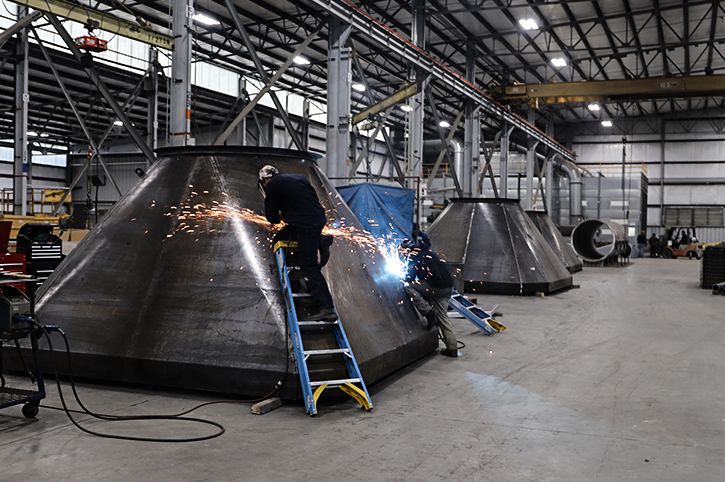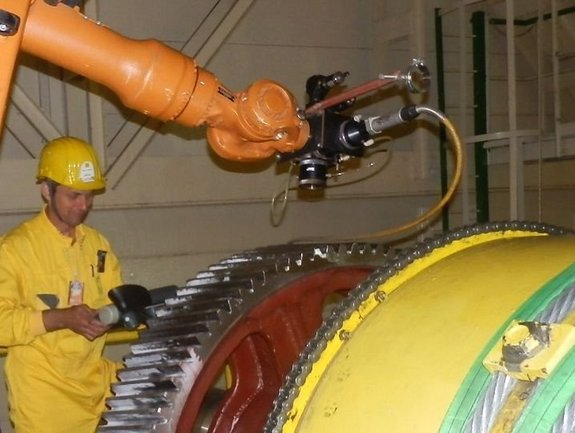Everything about Welding: Secret Insights Into Techniques and Finest Practices for Success
Welding encompasses a variety of techniques, each fit for certain materials and applications. Understanding these methods, such as GMAW, SMAW, and TIG, is essential for achieving perfect results. Additionally, the right devices and security methods can not be ignored. As prep work and troubleshooting play crucial functions in the welding process, mastering these components can significantly improve the top quality of the end product. What are the essential factors that assure an effective weld?
Comprehending Various Welding Techniques
Welding strategies include a variety of methods, each matched to certain applications and materials. Amongst the most usual strategies are Gas Steel Arc Welding (GMAW), Secured Metal Arc Welding (SMAW), and Tungsten Inert Gas Welding (TIG) GMAW, also referred to as MIG welding, is popular for its rate and adaptability, making it excellent for thin products. SMAW, or stick welding, is favored for its simpleness and efficiency in outdoor settings, particularly with thicker metals. TIG welding supplies accuracy and control, making it ideal for detailed job and non-ferrous steels (Belgrade Fabrication). Each technique has its special benefits and factors to consider, permitting welders to pick the finest approach based upon the project's needs, product type, and preferred outcomes. Recognizing these strategies is essential for effective welding
Essential Welding Equipment and Tools
While numerous welding methods call for particular abilities, the best devices and devices are just as vital for achieving quality results. Crucial welding tools includes welding equipments, which vary depending upon the method-- such as MIG, TIG, or stick welding. Safety equipment, consisting of helmets, handwear covers, and aprons, warranties security and comfort throughout the process. Furthermore, clamps and components help secure products in position, making certain precision in welds. Consumables like welding poles, cord, and shielding gas are likewise crucial components that influence the quality of the weld. Moreover, tools such as cutters and grinders promote surface prep work and post-weld finishing, adding to an expert outcome. Buying high-grade devices inevitably enhances the efficiency and effectiveness of welding projects.
Safety Practices in Welding
Proper safety and security methods are important in the welding market to protect employees from potential threats. Welders must put on proper individual safety devices (PPE), including headgears with appropriate shading, gloves, and flame-resistant garments. Appropriate ventilation is important to reduce direct exposure to damaging fumes and gases generated during the welding process. Additionally, employees should be trained in the correct handling of welding equipment to avoid accidents. Fire safety and security measures, such as maintaining flammable materials far from the welding location and having fire extinguishers readily offered, are required. Normal inspections of tools and offices can aid identify potential dangers prior to they cause mishaps. By sticking to these safety and security methods, welders can produce a more secure working setting and reduce dangers related to their profession.
Readying Materials for Welding
Preparing materials for welding is an essential step that greatly influences the top quality and honesty of the end product (Montana Mobile Welding and Repair Belgrade Welding). Appropriate prep work entails cleaning up the surfaces to remove pollutants such as rust, oil, and dirt, which can endanger the weld. Strategies such as grinding, sanding, or making use of solvents are commonly used to accomplish a clean surface area. Additionally, making certain that the products fit together snugly is important; gaps can cause weak welds. It's additionally essential to think about the positioning and positioning of the parts, as this will certainly influence the convenience of welding and the last result. Picking the appropriate filler product and making sure compatibility with the base metals is crucial for attaining strong, resilient welds.
Tips for Achieving High-Quality Welds
Attaining premium welds requires focus to detail and adherence to finest techniques throughout the welding process. Proper joint preparation is crucial, ensuring surfaces are clean and totally free from pollutants. Picking the ideal filler product and welding method based upon the base steels is critical for perfect bonding. Keeping regular traveling rate and angle while welding can promote and prevent problems harmony. Furthermore, managing heat input is important; too much warm can lead to warping and compromised joints. If required, consistently evaluating the welds throughout the process allows for immediate modifications. Utilizing suitable post-weld treatments, such as cleaning and stress and anxiety relief, can enhance the longevity and stability of the weld, inevitably making certain a successful result.
Fixing Common Welding Issues
Welding usually presents challenges that can influence the high quality and integrity of the end product. Common concerns such as porosity, irregular weld grains, and getting too hot can emerge, each requiring particular fixing methods. Understanding these troubles is crucial for welders to enhance their abilities and accomplish optimal results.
Porosity Issues Described
Although porosity can usually be ignored, it remains an important problem in welding that can compromise the stability of a finished product. Porosity refers to the visibility of tiny gas pockets within the weld grain, which can lead and deteriorate the joint to premature failing. This problem usually arises from pollutants, why not check here moisture, or incorrect securing gas insurance coverage during the welding process. To mitigate porosity, welders must confirm that the base products are clean and completely dry, make use of ideal shielding gases, and keep regular welding parameters. Frequently inspecting the devices and setting can additionally help identify possible concerns prior to they show up in the weld. Addressing porosity successfully is crucial for attaining strong, durable welds that satisfy quality standards.

Inconsistent Weld Beans
Irregular weld beads can substantially affect the top quality and toughness of a completed item. Numerous elements add to this issue, consisting of inappropriate traveling rate, wrong amperage settings, and irregular electrode angles. When the welder moves as well rapidly, a grain may show up slim and lack infiltration, while moving also slowly can create too much buildup. Additionally, making use of the incorrect amperage can lead to either damaging or extreme spatter, both of which compromise weld stability. The welder's strategy, such as irregular torch motion, can likewise lead to irregular bead look. To alleviate these troubles, welders need to concentrate on preserving constant, regulated movements and making certain correct equipment settings to attain harmony in their welds. Uniformity is essential to accomplishing strong and dependable welds.
Overheating and Warping Issues
Too much warm throughout the welding process can bring about substantial overheating and contorting problems, affecting the structural stability of the workpiece. These troubles typically materialize as distortion, which can compromise positioning and fit-up, making more setting up testing. Factors adding to overheating include the option of welding parameters, such as voltage and travel speed, along with the kind of product being bonded. To reduce these problems, welders ought to preserve regular travel speed and suitable warmth input while keeping an eye on the work surface temperature. Furthermore, pre-heating or post-weld warm treatment can assist relieve anxieties triggered by quick cooling - Montana Mobile Welding and Repair Belgrade Fabrication. Routine inspection and adherence to best practices are essential in stopping overheating and making certain the durability and reliability of welded frameworks
Often Asked Concerns
What Are the Profession Opportunities in the Welding Sector?
The welding market provides diverse career opportunities, including positions as welders, inspectors, instructors, and designers. Experts can operate in production, building and construction, aerospace, and auto industries, gaining from solid demand and competitive incomes in numerous roles.
How Can I Boost My Welding Speed Without Giving Up Top Quality?
To improve welding speed without compromising top quality, one need to exercise efficient methods, keep tools, enhance setups, and improve hand-eye coordination. Normal training and looking for responses can also considerably add to attaining much faster, high-quality welds.
What Certifications Are Available for Welders?
Numerous qualifications exist for welders, consisting of those from the American Welding Society (AWS), the National Center for Building And Construction Education And Learning and Research (NCCER), and various industry-specific organizations. These credentials enhance employability and show ability proficiency.
Exactly How Does Welding Impact the Characteristics of Metals?
Welding influences the homes of metals by altering their microstructure, which can result in modifications in solidity, toughness, and ductility. Heat input and cooling rates throughout the process considerably influence these material qualities.
Can I Weld Dissimilar Metals Together?
